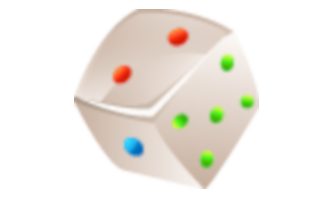Roots, Stems and Leaves
Science, Grade 5
Roots, Stems and Leaves
Study Guide

Roots, Stems and Leaves
Flash Cards

Roots, Stems and Leaves
Quiz

Roots, Stems and Leaves
Worksheets

Roots, Stems and Leaves
Games

Study Guide Roots, Stems and Leaves Science, Grade 5
❮
1
/
3
❯
ROOTS, STEMS, AND LEAVES Plants have structures that serve different purposes for keeping the plant alive and healthy. Let’s start from the bottom up, with the ROOTS: The roots of a plant have three jobs to do: • to anchor the plant firmly into the soil, • to store food, and most importantly, • to absorb water and nutrients from soil. Plants have two different root systems. A taproot system consists of one main large root that grows directly down into the soil. A fibrous root system consists of many roots that grow underground in many directions. Taproot Fibrous Roots Next, the STEM: The stem also has several jobs. It helps the plant reach up tall which enable the plant to take in more sunlight. The stem also carries food, water, and nutrients all throughout the plant. All parts of a plant need food, water, and nutrients. These essential necessities get to all parts of the plant through the tissues in the plant, called the xylem and phloem. © Copyright NewPath Learning. All Rights Reserved. Permission is granted for the purchaser to print copies for non-commercial educational purposes only. Visit us at www.NewPathLearning.com.
Vascular plants have special tubes that carry food, water, and nutrients throughout a plant. The xylem is the tube that carries water and nutrients from the roots to leaves. The phloem carries sugar away from leaves to the rest of the plant. Now to the LEAVES: Most of a plant’s food is made in its leaves. Leaves of a plant are made of plant organs and tissues. The top layer of leaf, which protects the leaf, is called its epidermis. Leaves have tiny openings underneath them called the stomata which let air and water in and out of the leaf. Lesson Checkpoint: What three jobs do roots do for the plant? How do plants reproduce? Flowering plants reproduce using seeds. A flowering plant uses several parts in the reproduction process. The stamen is the male part of the flower. Pollen forms on top of each stamen. The pistil is the female part of flower. A flower may have more than one pistil or stamen. Pollen is the plant substance that needs to be transferred from one flower’s stamen to the pistil of another flower in order for plant reproduction to occur. Pollination is the movement of pollen from one flower to another. Flowers pass along their hereditary information in seeds. The seeds thus contain all the information for reproducing the flower, stem, leaves, and roots of a plant © Copyright NewPath Learning. All Rights Reserved. Permission is granted for the purchaser to print copies for non-commercial educational purposes only. Visit us at www.NewPathLearning.com.
A seed is made up of three parts: a seed coat, embryo (which is a new plant ready to grow), and endosperm. Spores, asexual reproduction (reproduction involving only one parent), budding, and runners are all ways some plants reproduce without seeds. Lesson Checkpoint: What is pollination? Plants make their food through the process of photosynthesis Plant makes sugar for food through the process of photosynthesis. All cells need energy to function and live; through the process of photosynthesis sugar gets sent to all the cells in the plant. Sugar is used for energy and for forming cellulose – a chemical that makes up plant cell walls. The more sunlight the plant absorbs, the more sugar the plants make. Photosynthesis occurs in the chloroplast of a plant cell, where the plant absorbs sunlight. Plants use carbon dioxide they take in from the air around them, water they get from the soil through their roots, and energy from the sun to produce sugar and oxygen. Plants release the oxygen, which they don’t need, into the air for us aerobic organisms, who need oxygen to survive. Lesson Checkpoint: What absorbs sunlight in a plant cell? © Copyright NewPath Learning. All Rights Reserved. Permission is granted for the purchaser to print copies for non-commercial educational purposes only. Visit us at www.NewPathLearning.com.
